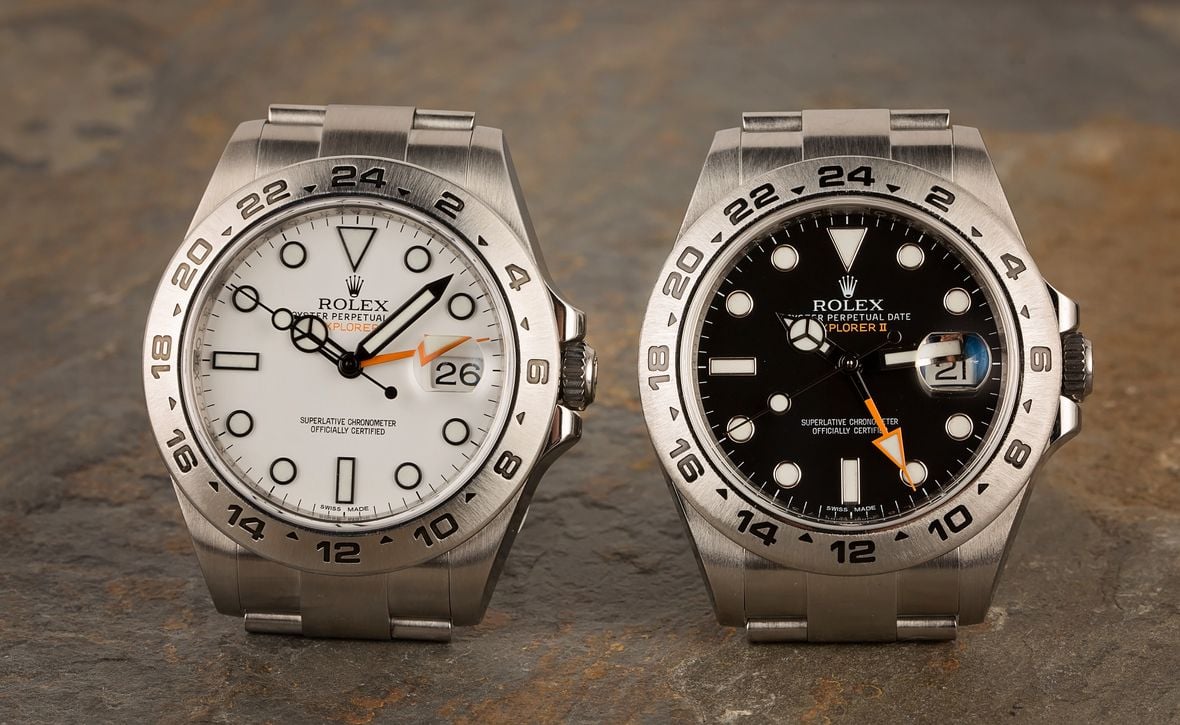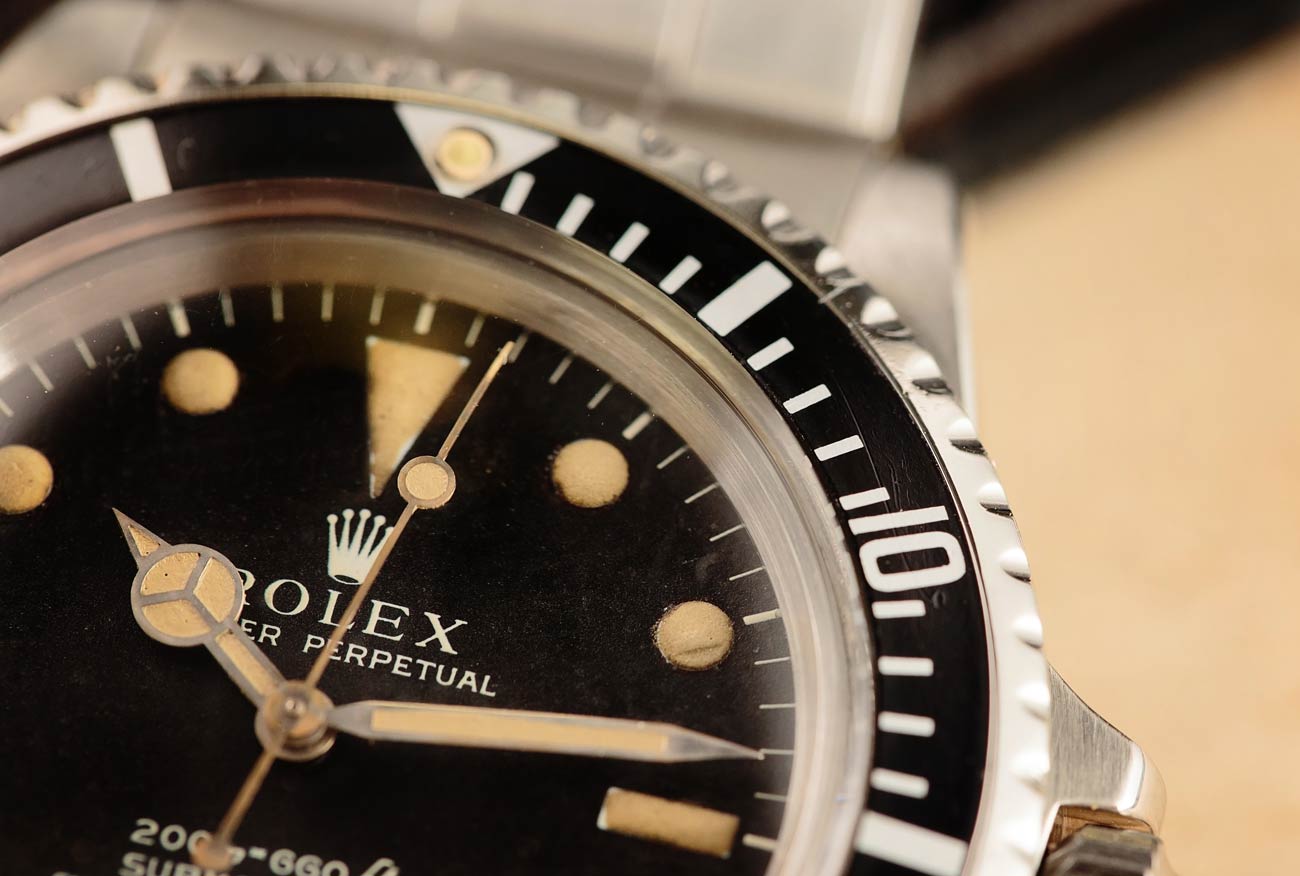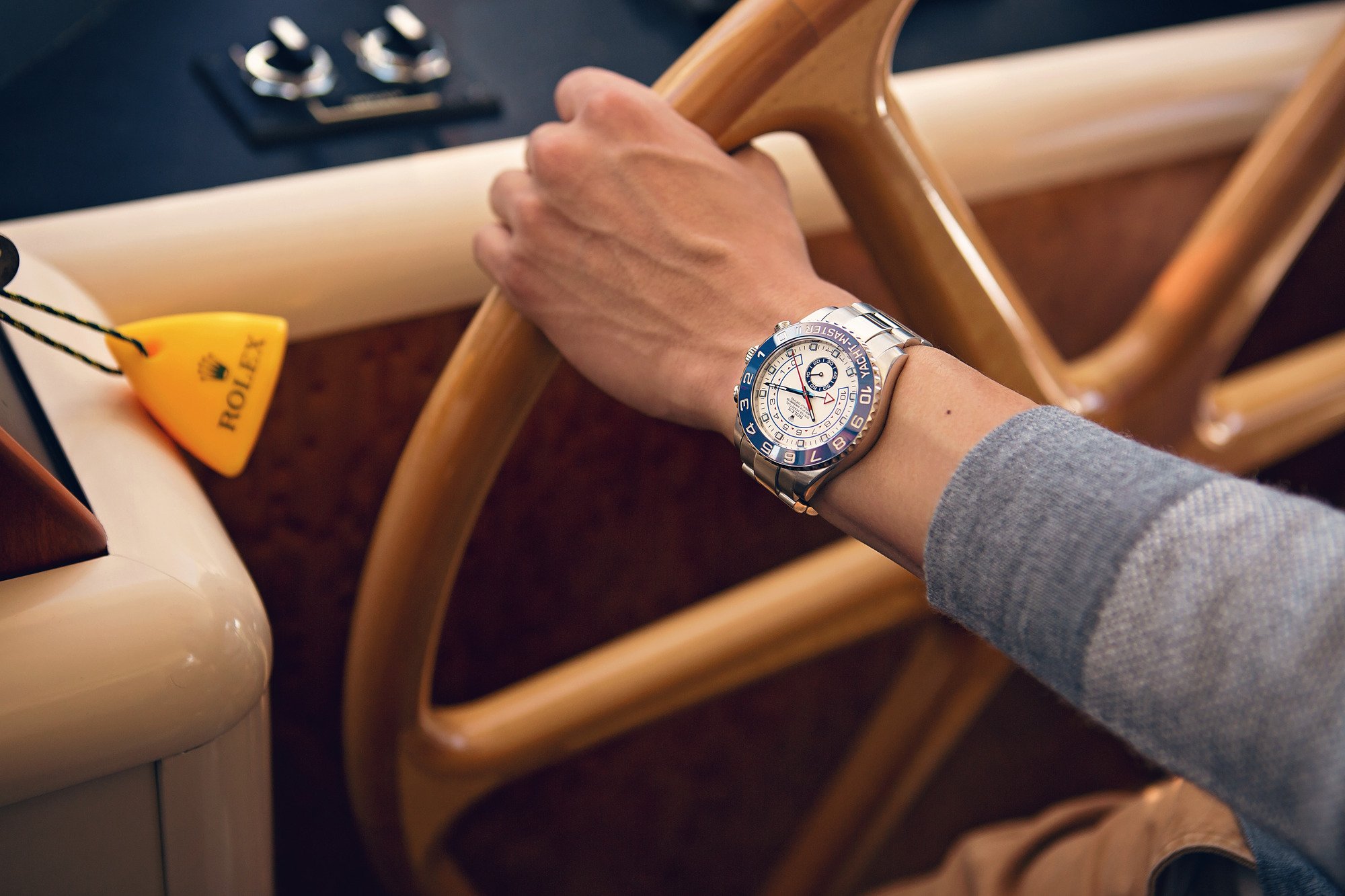First released in 1971 as a watch designed specifically for speleologists (cave explorers), the Rolex Explorer II was intended to be an extension of the original time-only Explorer model and these two watches are still offered alongside each other to this day. It may have spent a significant portion of its history as one of the brand’s most frequently overlooked sports watches, but the Explorer II has been gaining a lot of popularity in recent years, and there are now waiting lists for it at retailers around the globe.
Just like the GMT-Master series, the Explorer II has an additional 24-hour hand that circles its dial – and just like the Rolex GMT-Master, the Explorer II also has a bezel that features 24-hour markings. So, can you use the Rolex Explorer II as a GMT watch?
Rolex Explorer II

Explorer II Fast Facts:
- First introduced in 1971.
- Originally designed specifically for speleologists (cave explorers).
- Only ever manufactured in stainless steel.
- Only fitted with either black or white (“Polar”) dials.
- Features a date display at the 3 o’clock location.
- Includes additional 24-hour hand and fixed 24-hour bezel.
- Water resistant to 100 meters (330 feet).

What is a GMT watch?
Before we dive deeper, it’s essential to address the question: what is a GMT watch? This term often gets misused to describe any timepiece with multiple timezone displays. However, to accurately answer what is a GMT watch, we must specify that it applies only to models featuring an additional timezone displayed in a 24-hour format. This distinction is crucial in understanding the unique functionality of GMT watches and sets them apart from other multi-timezone timepieces.
There are many dual-time watches on the market and many others that feature 24-hour displays on them, but in order for a watch to truly be classified as a GMT, it needs to have the ability to simultaneously display more than one timezone and one of those timezones must be represented in a proper 24-hour format.
Is the Rolex Explorer II a GMT?
All Rolex GMT-Master watches are GMT watches (as one would hope, given that “GMT” is in their name), but not all Rolex Explorer II models can be classified as GMT watches – regardless of the fact that all of them have additional 24-hour hands-on their dials.
A 24-hour format is certainly one of the prerequisites for defining a GMT watch, but the other requirement is that the watch must be able to display two or more timezones. On the very first iteration of the Rolex Explorer II (the Rolex 1655 from 1971), the additional 24-hour hand was permanently synchronized to the standard 12-hour hand, simply moving at ½ the speed around the dial.
While there are still two different hour hands on these watches, the 24-hour hand was little more than a prominent AM/PM indicator to be read against the fixed 24-hour bezel. It would not be until the arrival of the second generation in the mid-1980s that the Rolex Explorer II would gain the ability to function like a true GMT watch.

Which Explorer II models can be used as a GMT
With the exception of the very first iteration of the model (the ref. 1655), all other Rolex Explorer II references can be used as GMT watches. This includes the following 3 models, all of which are available with either blacl or white dials:
- Reference 16550: Introduced in 1985, the Rolex 16550 marked a significant evolution in the Explorer II line. This transitional model featured a larger 40mm case and offered both black and white dial options. Notable for its “rail dial” variants and the tendency of its white dials to develop a creamy patina, the 16550 is highly sought after by collectors. It introduced the caliber 3085 movement and sapphire crystal, enhancing the watch’s durability and precision.
- Reference 16570: The reference 16570, launched in 1989, refined the Explorer II design and had a long production run until 2011. This model maintained the 40mm case size and offered both black and white dial options. The Rolex 16570 saw several updates over its lifespan, including a switch from tritium to SuperLuminova for its luminescent material. It housed the caliber 3185 movement, known for its reliability and accuracy. The 16570’s enduring design and versatility have made it a favorite among enthusiasts.
- Reference 216570: Introduced in 2011, the Rolex 216570 brought significant updates to the Explorer II line. This model increased the case size to 42mm and reintroduced the distinctive orange 24-hour hand, paying homage to the original Explorer II. The 216570 features Rolex’s caliber 3187 movement, offering improved magnetic resistance and shock absorption. Available in both black and white dial versions, this reference modernized the Explorer II while maintaining its adventurous spirit and functionality.
This means that if any one of the following statements is true about your particular watch then it is one of the Rolex Explorer II models that can be used as a GMT.
- Your watch has a sapphire crystal.
- Your watch has a reference number with 5 or more digits.
- Your watch has a white dial.
- Your watch has a case diameter of 40mm or larger.
- Your watch has blue-glowing luminescence.
Since the 24-hour bezel on the Rolex Explorer II does not rotate, the two hour hands must be independently adjustable in order for the watch to be used as a GMT. With that in mind, if any of the above statements applies to your specific watch, then it means that your Explorer II is one of the models that includes a movement that features independently adjustable hour hands.

How to use the Explorer II like a GMT
To use your Rolex Explorer II like a GMT watch, you will want to configure it so that your home or reference time is displayed by the 24-hand, while the time in your current location is displayed by the standard 12-hour hand. Your local time will be read in the normal way with the hour and minute hand against the dial, while reference time will be indicated by the position of the 24-hour hand in relation to the 24-hour scale on the fixed bezel.

Explorer II GMT Operating Instructions
Before you set up your Rolex Explorer II to function as a GMT watch, it is first important to note that there are three different positions for the winding crown and depending on the position, rotating it will engage a different part of the movement.
- Position 1: Manual winding position; crown is unscrewed from case, rotating the crown will wind the watch.
- Position 2: Local time setting position; crown is pulled out one notch, seconds hand is still running, local hour hand will jump forward or backward when crown is rotated
- Position 3: Reference time setting position; crown is pulled out all the way to the second notch, seconds hand stops running, both hour hands and minute hand move when crown is rotated.
Step 1 – Setting Reference Time
The first thing you will want to do is to line up all the hands when you set the reference time (home time) on your watch, since synchronizing them now will help make the rest of the process easier. To do this, simply pull out the winding crown all the way to Position 3 and then rotate the hands so that they all line up with the 12 o’clock marker.
From here, you will want to keep rotating the hands until your desired reference time is displayed by the 24-hour hand and the minute hand. Remember, this will always be in a 24-hour format, with the 24-hour hand pointing to its corresponding value against the 24-hour scale on the external bezel.
Step 2 – Setting The Date
The next thing you will want to do after setting the reference time on your watch is to set the date. To do this, press the winding crown in one notch to Position 2. In this position, the seconds hand will resume running and rotating the winding crown will jump the local 12-hour hand forwards or backward in one-hour increments.
As the 12-hour hand passes midnight, the date will change. Keep rotating the winding crown until the correct date appears in the window at the 3 o’clock location. It is important to remember that since the local hour hand displays time in a 12-hour format, the date display will only change once every two times that the local hour hand circles the dial.
Step 3 – Setting Local Time
While leaving the winding crown in Position 2, continue to advance the local 12-hour hand until it displays the correct time in your current location. Since this is a standard 12-hour hand, it is important to take note during this step of whether the local hour hand is displaying AM or PM hours against the dial.
Once your local time has been set, press the winding crown back in all the way and screw it back down to the case. This ensures that your Rolex Explorer II remains resistant to moisture and dirt.
Reading GMT Time with Your Rolex Explorer II
With your Rolex Explorer II properly set up to function as a GMT watch, you read the current time in your local timezone with the normal hour hand minute hands against the dial, while the time in your home or reference location will be displayed by the 24-hour hand in relation to its position against the bezel. This quickly allows you to simultaneously see two different timezones and since your reference time is always indicated in a 24-hour format, there will be no confusion in regards to AM or PM hours, even if it is on the complete opposite side of the world.
An additional benefit of this style of GMT watch is that its jumping local hour hand is perfect for travel. For example, let’s say that you are flying from Los Angeles to Switzerland and you have a layover in New York for a few hours. New York City is three hours ahead of Los Angeles, so when you land on the East Coast for your layover, simply unscrew the crown and jump the local hour hand forward three hours so that your watch will show the right time in your current location.
After your connecting flight when you land in Switzerland, simply jump the local hour hand forward again and your watch to reflect the time in your new location. When adjusting the local hour hand, the seconds hand and minute hand remain moving, so adjusting your timezone does not disrupt the timekeeping precision of your watch. Additionally the time in your home city (Los Angeles) will always be displayed by your 24-hour hand, so you won’t accidentally call home and wake everyone in the middle of the night by inadvertently getting your AM and PM hours mixed up.









